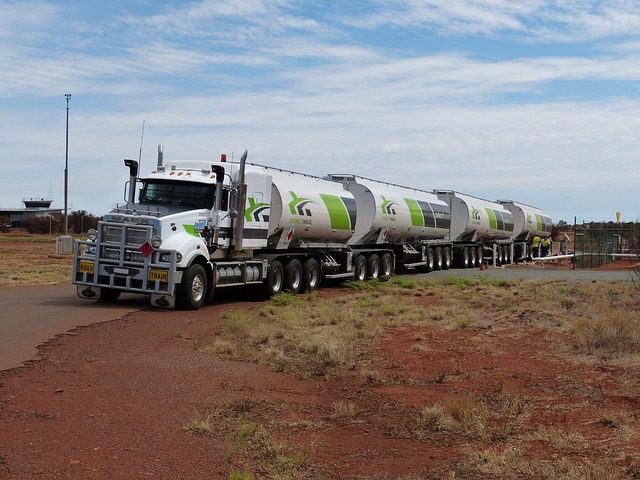Looking to register your car in California? This comprehensive guide breaks down the process step-by-step. First, understand California’s unique car registration requirements, which include rigorous VIN (Vehicle Identification Number) verification. Gather essential documents for this critical check, such as proof of ownership and insurance. Then, choose between online or in-person registration, both simple and efficient. Finally, pay fees and receive your official plates. Master the art of VIN verification and navigate California car registration with ease!
- Understand California Car Registration Requirements
- Gather Necessary Documents for VIN Verification
- Perform Vehicle Identification Number (VIN) Check
- Complete Online or In-Person Registration Process
- Pay Registration Fees and Receive Your Plate
Understand California Car Registration Requirements

Before registering your car in California, it’s crucial to understand the state’s specific requirements. One key aspect is ensuring accurate and up-to-date vehicle information, which includes a valid Vehicle Identification Number (VIN) verification. The VIN is a unique code that identifies your car and is essential for registration and title purposes. In California, this process typically involves a mobile VIN inspection or verification to confirm the vehicle’s details against state records.
During the registration process, you’ll need to provide proof of identification, ownership, and insurance. Additionally, all necessary documents, such as the title and any emissions test results, must be presented. A mobile vin inspection service can streamline this by ensuring your VIN is legitimate and checking for any outstanding issues or recalls before you submit your registration application. This step is vital to avoid delays or complications in the registration process.
Gather Necessary Documents for VIN Verification

Before heading to the California Department of Motor Vehicles (DMV) to register your car, ensure you have all the required documents for VIN verification. The Vehicle Identification Number (VIN) is a unique code that identifies your vehicle, and its verification is a crucial step in the registration process. Gather important paperwork such as the title or registration certificate from the previous state, proof of insurance, and a valid driver’s license or ID card. Additionally, you’ll need to present documents proving your identity, residency, and ownership of the vehicle, like a utility bill or bank statement with your California address.
For convenience, many people opt for a mobile vin verifier service, allowing them to complete the VIN inspection process without visiting a DMV office. This method is especially appealing for those in remote areas or with busy schedules. Alternatively, some car dealerships and repair shops offer vin inspection services, which can streamline the registration process by ensuring your vehicle’s documentation is in order.
Perform Vehicle Identification Number (VIN) Check

Before registering your car in California, it’s crucial to perform a Vehicle Identification Number (VIN) check. This step is essential for ensuring that the vehicle you’re planning to register is legitimate and hasn’t been reported stolen or had previous damage that could affect its safety. A mobile vin verifier or inspector can facilitate this process by providing on-site VIN verification services, which are often more convenient than traditional methods.
By utilizing a mobile vin inspection, you can quickly validate the vehicle’s history, including its previous owners, maintenance records, and any reported accidents. This information is critical in making an informed decision about registering your car. In California, where strict regulations govern vehicle registration, ensuring that every detail checks out during the VIN verification process is key to a smooth and legal registration procedure.
Complete Online or In-Person Registration Process

In California, registering your car involves either a completely online process or an in-person visit to a designated center. The first step for both methods is the verification of your Vehicle Identification Number (VIN). This critical step ensures the authenticity and legality of your vehicle. For convenience, many opt for mobile VIN verification services that can be conducted right from your home, making the initial steps straightforward and hassle-free. Once your VIN has been verified, you’ll need to gather essential documents like proof of ownership, insurance, and identification.
If choosing the in-person route, head to a California Department of Motor Vehicles (DMV) office with your documents. Alternatively, the online process allows you to submit everything digitally. Both methods have their advantages; online registration is faster and more efficient, while in-person offers the chance for immediate feedback and assistance from DMV staff. Regardless of your chosen route, completing the VIN verification is a crucial step that ensures your car’s registration goes smoothly.
Pay Registration Fees and Receive Your Plate

After completing the registration process, the next step is to pay the required fees for vehicle registration in California. These fees cover various costs associated with maintaining a safe and organized system. The amount you’ll need to pay depends on your vehicle’s type, age, and other factors. You can typically make this payment online or at a local DMV office. Once your payment is processed, you’ll receive your vehicle’s license plate. This plate is a unique identifier for your car and will display important information, including the vehicle identification number (VIN).
Remember that a proper VIN verification is crucial to ensure the authenticity of your vehicle. You can opt for traditional VIN inspection at a designated center or leverage modern solutions like a mobile VIN verifier. Many services now offer on-the-go VIN checks using advanced technology, making it convenient for California residents to verify their vehicles’ details quickly and efficiently.
Registering a car in California involves understanding specific requirements, gathering essential documents for VIN verification, completing either an online or in-person registration process, paying relevant fees, and receiving your personalized license plate. This straightforward procedure ensures your vehicle complies with state regulations, facilitating safe and legal operation on California roads. Remember to conduct a thorough VIN check as the initial step to ensure a smooth and efficient registration experience.
